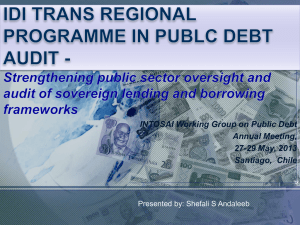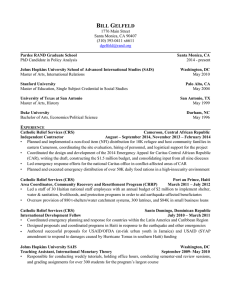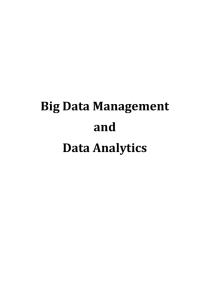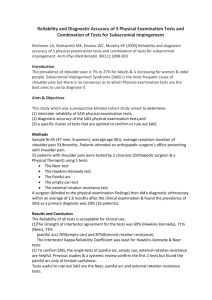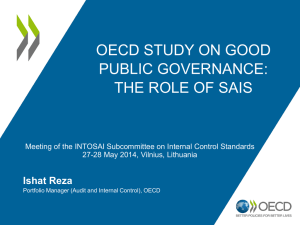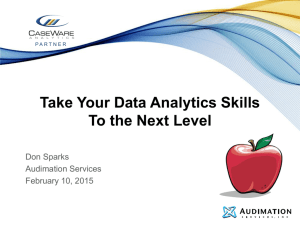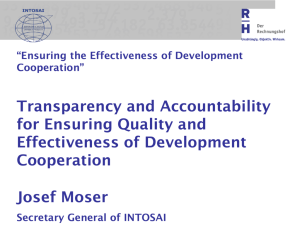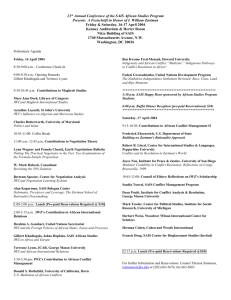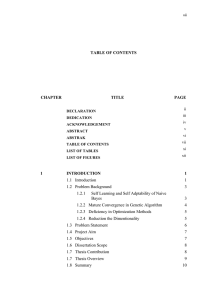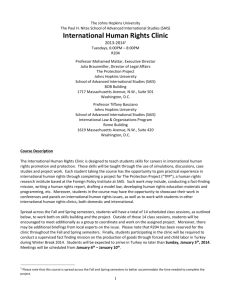Big data analytics - INTOSAI Working Group on IT Audit
advertisement
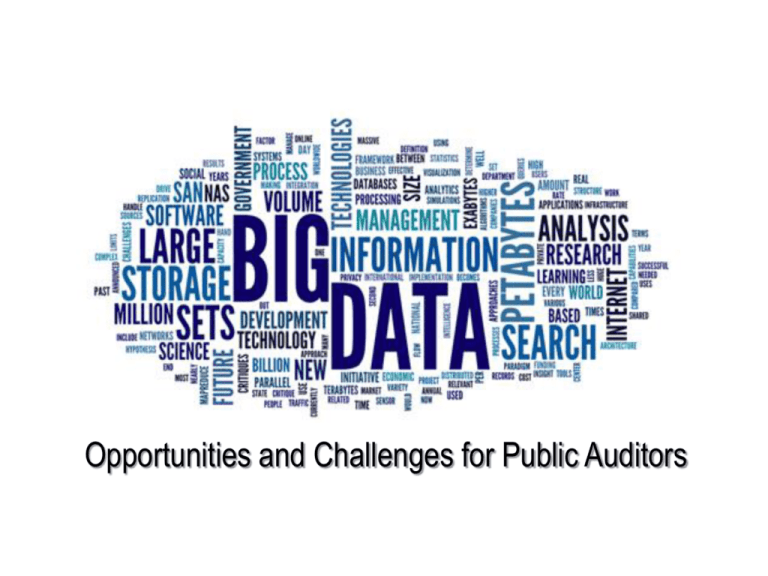
Opportunities and Challenges for Public Auditors Big data • Big data – Large and complex data beyond the traditional capacities of IT infrastructure collated from all imaginable sources, which leverages Information as a vital asset. Includes – Structured/unstructured data – Internal/external data – Formal and informal communication Big data analytics • Big data analytics – Process of analysing big data with a view to discovering – Patterns – Correlations – abnormal behaviour and red flags Opportunities - Technological explosion – Audited entities transitioning into virtual environments – Processes in real time – Storage, compute and connectivity – no longer limiting factors – Proliferation of Data Analytic tools Opportunities -Transformational impact for Audit – Enables macro analysis at planning stage of entire data sets instead of a representative sample. – Enables digital auditing for • enhanced effectiveness and efficiency • Better detection of frauds, waste and abuse – Ushers in new age competencies • predictive analysis • advanced statistics Opportunities- Aid to governance Enables a proactive role for SAIs vis-a-vis executive and governance by. – Sharing big data – Sharing insights – Promoting transparency – Enhancing oversight Opportunities- leveraging data assets • Data created by SAIs –internal databases and working papers audits etc • Data of audited entities –data collected from various audited entities • External data – Data/Reports published by Government – other data in public domain - surveys, bulletins information published by autonomous bodies etc. Big data analytics- Challenges • Managing the people – Transforming the mindsets of auditors – Capacity building • Managing the data – Addressing sensitivities of access and usage of data – Addressing veracity of data from various sources – Privacy issues, legislative and regulatory compliance • Managing the IT infrastructure – Augmentation of appropriate infrastructure – Establishment of the technical solution WGITAs role • Espouse - the goal of preparing the SAIs for auditing in the big data environment • Encourage SAIs in establishment, implementation and maintenance of a robust governance framework • Provide - guidance on best practices to support SAIs to adapt audit design procedures and methodologies to the changing order of big data environment WGITAs role • Practical guidelines could be provided to SAIs on – Digital auditing –preparing and developing mechanisms – Paradigm shift in data analytics –moving from representative samples to the whole data sets. – Guidance on data analytics – on usage of tools, risks involved, training infrastructure Thank You Initial endeavours - SAI India Provided additional insights • Big data analytical tools enabled additional insights in the cash flow management by State Government involving – Exponential transactional level details of Treasury and RBI for analysing • Demand and supply mismatch of various departments • Idle cash and avoidable Government borrowings • Float time for disbursement – possible red flags/abnormal behaviour • Unreconciled cash balances of State Government vis-à-vis RBI balances Initial endeavours - SAI India Provided greater efficiency • Big data analytical tools enabled Audit planning and assessment of substantive testing from a centralised location in a case of presumptive fraud in employee payments involving – Volume – 5 million transactions over 18-36 months – Complexity – 30,000 field audit units, 35 Departments, 23 Districts and 256 Sub treasuries
